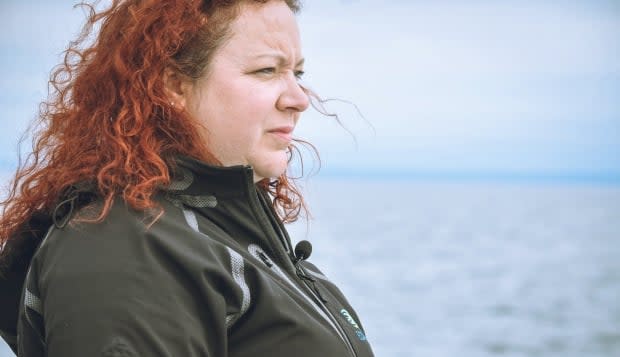Hurricane Fiona changed ocean temperatures, tore up marine life habitats

At the height of tropical storm Fiona on Saturday, a scientific buoy measured a record-breaking wave of 15.9 metres — almost four storeys — about 50 to 70 kilometres northeast of Quebec's Magdalen Islands.
The high waves didn't just affect people and human-made structures. They also led to the destruction of natural habitats and warmed up parts of the ocean that are so deep, the water temperature typically hovers below 3 C.
Some scientists warn the impacts on marine ecosystems could be severe and long-lasting as tropical storms become more common.
"It's certainly something that's now on our radar," said Peter Galbraith, a research scientist in physical oceanography with the Maurice Lamontagne Institute in Mont-Joli, Que., in the Lower St. Lawrence region.
In an interview with Quebec AM on Tuesday, Galbraith said that the wind and waves were so powerful during the storm that the different layers of water in the ocean got mixed, heating up the deeper layers and cooling off the surface layer.
As a result, the temperature measured at the surface dropped by 6.5 C in just one day — a process that would normally take six weeks in the fall — and the water 40 to 50 metres deep warmed up by about 6 C, according to measurements taken by the same buoy that registered the huge wave.

For species like snow crabs or other bottom-dwellers that are accustomed to water that is below zero, it was likely a shock, Galbraith said.
"Suddenly in one shot, in one day, we raised the temperature of their usually very cool habitat by six degrees. So it has a huge impact," he said.
These species will likely have to adjust to those unfamiliar temperatures because it can take weeks for deeper layers of the ocean to cool back down, he said.
Destroyed habitats
The storm also disrupted marine life in the tidal zone, affecting species such as shellfish, sea worms and aquatic plants.
These organisms are accustomed to tidal currents and waves and have evolved to attach themselves to rocks or other surfaces, said Lyne Morissette, a marine biologist based in Sainte-Luce, Que. She who works for a marine sciences consulting firm called M-Expertise Marine.
But there are limits to how much force they can take, she said.

And in the Magdalen Islands, where Morissette was based during the storm, many did not survive the storm.
"We could see clams that we could collect by hand, without a shovel, on the beaches," she said. "We could see seaweeds that were torn off and found on land and on the streets, everywhere."
The storm also damaged the islands' shorelines and seagrass beds, which are home to seabirds and other migratory birds that stop to feed or rest there.
Morissette described the losses suffered by the people living near the ocean as a tragedy but she said Fiona "has affected what lives in the water and what lives on the shorelines," as well.

